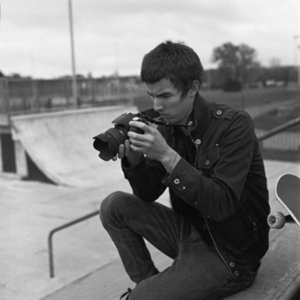ASK & DISCUSS
INDEXNeed a decent 1080p camera, good in low light, for 5K or under. All advice appreciated. :-)
Only members can post or respond to topics. LOGIN
Not a member of SP? JOIN or FIND OUT MORE
11 years, 3 months ago - Andy Remic
Okay. I've narrowed down to either a Sony PMW200 or a Sony NexFS100. The Nex is only 28mbs, but seems to offer a more "cinematic" visual, which is what I really want (I've seen test footage and it looks incredible).
My question is this (after reading several debates across t'internet)....
Does the 50mbs *really* matter? Would a good movie *really* not be broadcast because the 28mbs didn't meet EBU standards? I see Paranormal Activity was recorded on my old Sony HDV FX1 and that went out in cinemas!!
I also see that the US have much lower requirements than Europe/UK.
Hmmmm. What do you guys reckon???
11 years, 4 months ago - John Lubran
The Canon XF305 was the first 50mbs conventional form video camera at that price level to have been specifically accepted by the BBC for HD, even though it only has one third of an inch CMOS chips, so strictly speaking not EBU HD standards. It has now been somewhat majorly displaced however by the Sony PDW 200 which is an all round better camera at only a little more cost. It's also worth considering the newer Sony PDW 300, which is the same as the PDW 200 but with a detachable lens system, it costs an additional 1500 UKP or so with one lens supplied. The new Sony NEX FS700 4K is only capable of 28mbs from its internal recording function though its large sensor meets EBU HD specs. The new Sony does however provide for RAW recording at up to 200mbs or more when connected to a separate (though physically docked) recorder such as the Ninja and other similar devices. By the time the Sony 4K has been equipped with lenses and recorder and other essentials the price will exceed 8K UKP. Nevertheless even at this price so equipped it's a lot of high production value for the money. Another option is to use the Sony PDW EX1 (fixed lens) or EX3 (detached lens) which have three half inch CMOS chips each, whilst they only provide 35mbs internally they can be connected to a Ninja type recorder to provide the higher specs exceeding EBU HD requirements. A good used EX3 with its detachable lens system can be found for around 3K UKP or as little as 2K UKP for a used EX1 and a new RAW recorder for less than 2K UKP. Half that for a used one. So theoretically, buying used gear a full EBU HD spec EX1 with a used RAW recorder might be had for just 3K UKP
11 years, 4 months ago - John Lubran
Not enough information to make a judgement. What do you want the camera for? If it's to meet EBU HD standards for broadcast the specs include not just 1080p (or 1080i) but 1080 x 1920 and at least 50mbs. Specs stipulate a mega chip or three chips (or CMOS) of at least half an inch each (most other similar 50mbs cameras don't have big enough imaging devices). There's a few cameras that come in close to your budget, a few less if you can't get the VAT back. Currently the one that's continuing to gain market support is the Sony PDW 200, it meets all the above specs and should be around c.4,300 UKP plus VAT (c.5,160 inc.). The advantage of that type is that it's a proper video motion picture camera with the high functionality of operation, control and audio quality that one needs in that domain. In other words just like your FX1000 its easy to use, particularly in 'run and gun' mode, whilst ticking the required boxes for a wide range of applications.
11 years, 4 months ago - John Lubran
Oops! Yes I meant the PMW200 the PDW is the other XDCAM series, bigger and pricier!
11 years, 4 months ago - Peter Ward
I used to sell video cameras, and what I found is it really doesn't matter. With the odd exception, camera A for 5K and camera B for 5K will both give your more or less the same results--so toss a coin (the reality is spending 1K vs 5K may not even matter). But it pays to know specifics. Is there anything exceptional you're trying to do that might tip the balance in favor one camera over the other?
11 years, 4 months ago - Louis Pattinson
Hey guys, 5K gives you many options. I use the Black Magic Pocket Cinema Camera, it shoots RAW and in PRO RES reducing cheap noisy video. With 5k you could buy 3 rigs or the bigger brothers.
It delivers great in low light 13 stops of dynamic range.
Add a Metabones speed booster with a sigma art 1.8 18-35 and its equivalent to something stupid like 1F
There a video I did with a £20 lens
https://www.dropbox.com/s/1r6d5d9q0q39cru/Car%20night.mp4
Heres a guy with the set up i just said.
https://www.youtube.com/watch?v=cvc_vsBCZHk
11 years, 4 months ago - Tim Fok
If you want lowlight sensitivity and for an indie feature, I wouldn't sniff anywhere close to a Blackmagic or XF305.
Both poor on lowlight, latter has a small sensor so better for run and gun.
I'd consider the canon C100 or Sony FS100. Former gets my vote for skin tones and ease of use, but up to you.
11 years, 3 months ago - Andrew Morgan
"If you want lowlight sensitivity and for an indie feature, I wouldn't sniff anywhere close to a Blackmagic or XF305"
As Louis posted above, the Blackmagic Cinema and Pocket Cameras with their respective SpeedBoosters give terrific low-light performance - my Sigma f1.8 18-35mm effectively becomes a rather impressive f1.0 with it (some lenses can get down to f0.74). Also, BM have just posted a firmware update (1.8) for the BMCC which improves its ISO 1600 performance - the only BM camera I wouldn't recommend for low-light is the 4k since shooting anything above ISO 400 brings out the fixed pattern noise.
11 years, 4 months ago - Andy Remic
Hi John and thank you for your extremely detailed and informative post. Just one question - I'm researching buying the Sony, but it keeps coming up with a PMW200 - which has the specs you describe. I'm assuming this is a UK cam and the PDW is maybe US? Anyway, thanks for trying to save me a bit of money as well ... but I'm going to go with the Sony and record to SxS. Many, many thanks for your time!! I'll credit you in the next movie ;-)
11 years, 4 months ago - Andy Remic
Cheers!!
I want 1080p, and as highlighted above, broadcast standard (so 50mbs).
It's to make my second feature, and I need it good in low light due to the supernatural aspects of the new movie.
Also been looking at Canon XF305, although I noted the new Sony 4K cam, but which only has a super CCD instead of 3.
Not sure how much difference this would make in the real world. :-)
11 years, 3 months ago - John Lubran
Hi Andy. Feature films have been shot on just about every type of media there is and transmitted on the telly. Bjork and Lars von Trier shot quite a bit of Dancer in the Dark with VX1000's, the first DV camera that got taken up by professionals in any quantity, the soft pastilated look being desired by the director.
We can easily follow the evolution of low cost hand held camcorders in broadcast from those types and the once ubiquitous PD150 and PD170 DVCAM's through the ground breaking HDV Sony Z1, the PMW EX1 and EX3 XDCAMs’ through to the PMW 200 and 300; the latter are now selling like hotcakes for good reason.
EBU rules allow for exceptional projects and circumstances, for artistic and logistical reasons; nevertheless those standards are serious, also for good reasons. Theatrical standards for cinema are different and less demanding. The issue with broadcast standards is as much about technical transmission requirements as about any subjectively perceived aesthetic quality. Ultimately it comes down to whether the final delivery media for transmission is what they call 'legal'. Skilfully applied post production tools however can effectively convert the 'illegal' to the 'legal'. It remains significant though that there have been very many cases of projects being delivered to broadcasters and rejected for no other reason than failing TX (The transmission engineers’ tests); such failures can be costly and damaging to ones standing with those broadcasters.
The FS100 does have an HDMI output to allow an attached RAW and/or high bit rate recorder, as we discussed earlier above. If the FS100 makes the film style you want and believe in then that's a pretty good reason to use it. The FD100, despite its well received picture quality, has been criticized quite widely for being a sandwich short of a picnic in terms of its on board facilities, no ND’s, bad ergonomics, suspect build quality and reduced bit rate at the highest HD settings. Some people are peed off because the new FS700 at just a bit more cost is much better. (This is now forcing a sale on the FS100, so tempting discounts are being offered). It's worth considering though that if you want the film to be as widely distributed as possible those technical standards do exist. Lars von Trier and other well established directors can bend the rules more easily than others! It also depends on what other aspirations you might have for filming broadcast projects. If you do plan to make more broadcast programmes EBU specs really are important. American broadcasters also have similar rules and are constrained by the requirements of transmission as we are. It may be that poorer quality material made ersatz legal in post is easier to get accepted by some US broadcasters.
It’s a difficult call Andy!
11 years, 4 months ago - Andy Remic
Hi John.
Thank you very much for your reply; much appreciated. :-)
The camera is to be used making my second indie ghost story feature, The Mask Within (www.anarchyfilms.co.uk).
I love your website and ethos, by the way!!
Regards,
Andy.





